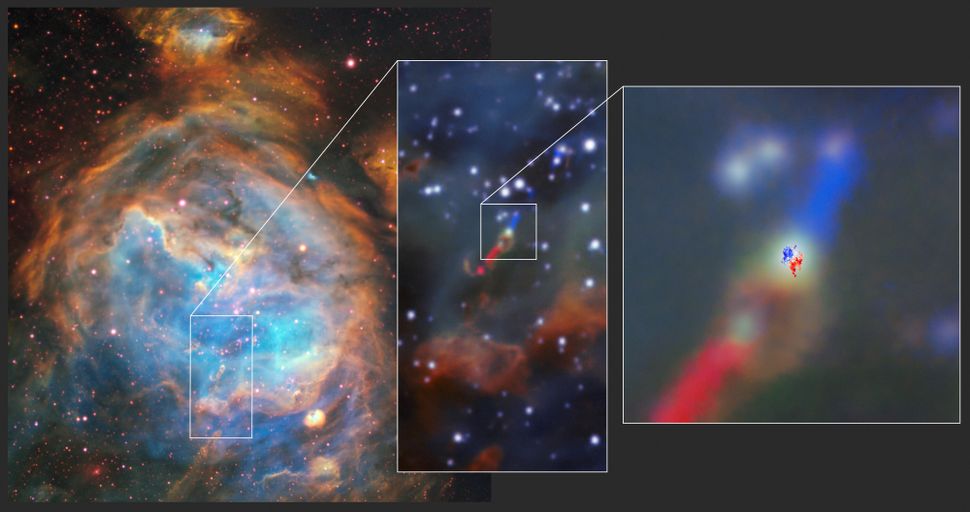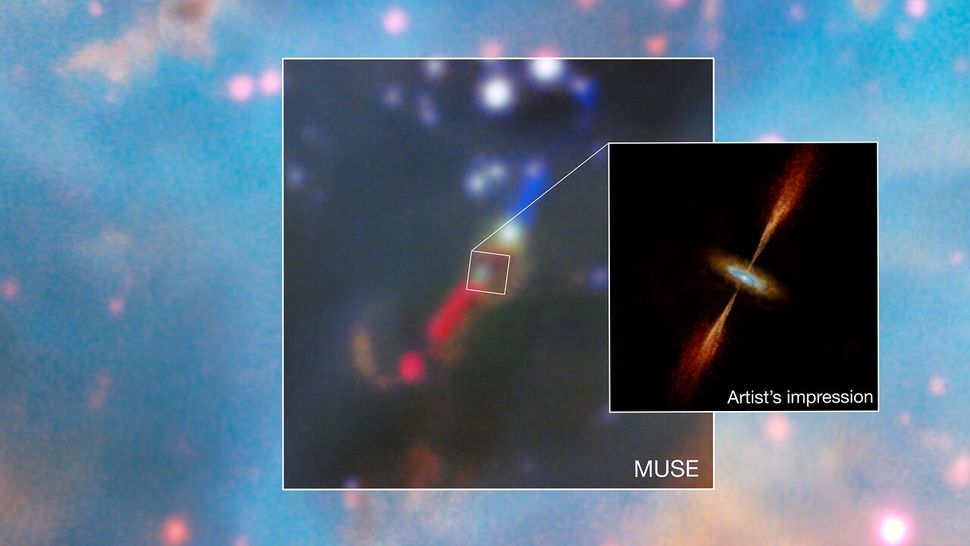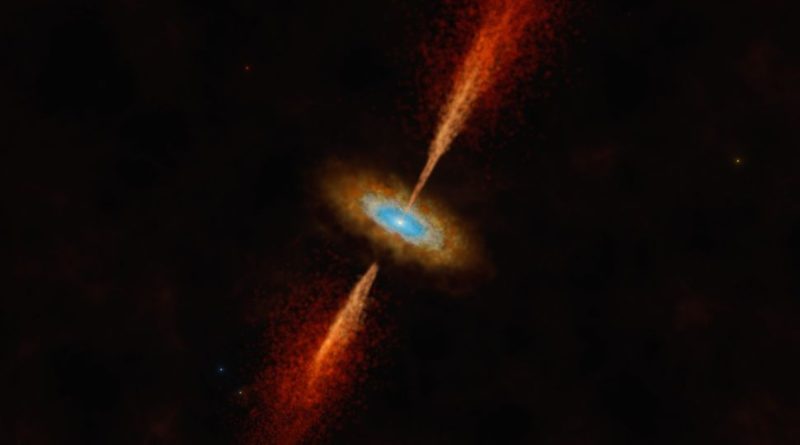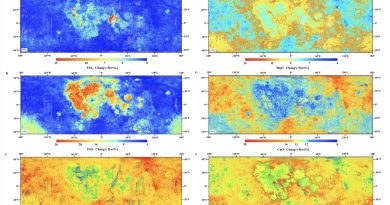Scientists just found a planet-forming disk beyond our Milky Way for the 1st time
In a landmark achievement, astronomers have made an unprecedented discovery of a swirling disk of material surrounding a young star in a galaxy beyond our Milky Way. This groundbreaking find challenges previous notions about the exclusive occurrence of star and planet formation within our own galaxy. The young star, part of the system designated HH 1177, is nestled within the Large Magellanic Cloud, a neighboring galaxy located an astonishing 160,000 light-years away. This article delves into the intricate details of this cosmic revelation, exploring the technology behind the discovery, the characteristics of the accretion disk, and the broader implications for our understanding of celestial processes.

Technological Marvels at Play:
The discovery unfolded through the collaborative efforts of scientists employing cutting-edge astronomical instruments. The Atacama Large Millimeter/submillimeter Array (ALMA), the largest astronomical project on Earth, played a pivotal role in observing the extragalactic accretion disk. Consisting of 66 antennas in Northern Chile, ALMA operates as a single radio telescope, enabling researchers to delve into the mysteries of distant celestial phenomena. The team, led by researcher Anna McLeod from Durham University, utilized the Multi Unit Spectroscopic Explorer (MUSE) instrument on the European Southern Observatory’s Very Large Telescope (VLT) to initiate the investigation.
Observations in the Large Magellanic Cloud:
The young star system HH 1177, situated within the Large Magellanic Cloud, unveiled its secrets as astronomers focused their gaze. The MUSE instrument on the VLT first detected a jet emanating from the forming star, serving as a crucial indicator of ongoing disc accretion. This prompted further exploration using ALMA to confirm the presence of a rotating accretion disk around the star. The proximity of the Large Magellanic Cloud, coupled with advancements in observational technology, allowed scientists to scrutinize this extragalactic system with unprecedented clarity.
Understanding Accretion Disks:
Accretion disks, such as the one discovered around the young star in HH 1177, are integral components of the star and planet formation process. These disks materialize as matter falls towards a nascent star or another accreting celestial object, carrying with it angular momentum. Rather than directly converging onto the central object, the matter forms a flattened, spinning disk that gradually feeds material to the celestial body. The distinctive feature of an accretion disk lies in the variation of velocity within the disk, with gas closer to the central object moving faster than the outer regions.
Significance of Velocity Variations:
Jonathan Henshaw, a research fellow from Liverpool John Moores University and a team member, emphasized the significance of velocity variations within the accretion disk. The phenomenon, akin to redshift or blueshift observed in the changing pitch of an ambulance siren, provides a crucial “smoking gun” indicating the presence of an accretion disk. This groundbreaking discovery not only validates the prevalence of such disks beyond our galaxy but also opens avenues for studying the early stages of planet formation.
Unique Conditions in the Large Magellanic Cloud:
Unlike within the Milky Way, the Large Magellanic Cloud offers a distinct advantage for astronomers. The material giving rise to young stars in this galaxy is comparatively less rich in dust. This reduced dust content allows for enhanced visibility, enabling astronomers to observe the central star of HH 1177 and potentially witness the initial phases of planet formation. This contrasts with the challenges faced within our own galaxy, where young stars are often enveloped in dense gas and dust clouds.
Potential Insights into Planet Formation:
The HH 1177 system, situated within the Large Magellanic Cloud, presents a unique opportunity to delve into the early stages of planet formation. The less obstructed view into the accretion disk allows scientists to explore the intricate processes that lead to the birth of planets. The implications of this discovery extend beyond our immediate galactic neighborhood, offering a glimpse into the universality of celestial phenomena.
Advancements in Astronomical Technology:
Anna McLeod highlighted the rapid technological advancements in astronomical facilities that facilitated this groundbreaking study. The ability to investigate star formation processes at significant distances, within a galaxy distinct from our own, marks a milestone in our understanding of the cosmos. As telescopic capabilities continue to evolve, the potential for unveiling further extragalactic mysteries becomes increasingly promising.

Conclusion:
The revelation of the first extragalactic planet-forming disk in the Large Magellanic Cloud marks a pivotal moment in astronomical exploration. Scientists have transcended the boundaries of our Milky Way, providing compelling evidence that the processes driving star and planet formation extend far beyond our galactic borders. The collaborative use of advanced instruments like ALMA and MUSE has illuminated the cosmic ballet unfolding within the HH 1177 system. As our technological prowess continues to expand, the universe unveils its secrets, inviting humanity to witness the grandeur of celestial wonders across distant galaxies.



